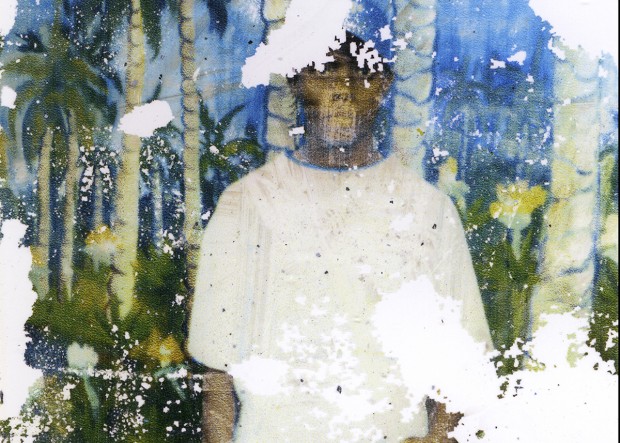BonDieuBon / a journey through suspension.
Bon Dieu Bon (good God good), is a term used widely in Haiti to express hope that despite the present circumstances, somehow things will work out. Bon Dieu Bon is an ongoing collaborative project with Lori Lee, an anthropologist. The original project focused on Haitian emigration to the Virgin Islands and it has progressed to include issues in the Haitian homeland and migration to the Dominican Republic.
Immigrants land late at night in areas less exposed to artificial light. They swim to the shore, performing the last stroke of a journey that goes through a series of islands in the Caribbean. Behind some bushes, people are wet, fearful, and maybe disoriented. In that state they will leave, forget, surrender, dispose or lose objects, clothes, letters, products or photos. These objects are the source of an archive that we have created.
The proposed show deals with Haitian migration based on studio photograph portraits found near the shore or the woods of the US Virgin Islands, specifically on the small island of St. John, where they are thrown aside by the owners while they are running from the migration police. These photographs become physical witnesses as they become transmogrified (distorted and transformed) by the effects of water and they become symbolic witnesses of their identity or others’ identity in transformation.
The images are classic portraits taken in photography studios found in Haiti, these studios were almost immediately introduced in Haiti by the French colonial power upon invention in France, and the photographic portrait became a massive expression of self-identity. Painted backgrounds then evolved from realistic scenes to naïf painting depicting ideal landscapes, imaginary constructions of the cities in the Diaspora, and Utopic scenes. An example is the background that depicts a snow scene, this is a direct result of an imagined scene based on the photographs that family members send to Haiti, portraying them in a snow scene in Canada or New York.
In that context we understand the photo studio performance as the initiative journey, as the denial of chaotic reality and the active self-construction of their own imaginary and Utopic ideal. The act of the portrait ultimately becomes simultaneously an act of memory, leaving the resulting images to others to remember him or her and imagine his/her future, through this desire of a journey to the landscape painted as background. Ultimately the photographs are an act of resistance, where people take control over there own construction of their identities.
The proof of these journeys of transformation is these photos found in the woods and shores of USVI. These images are an index of the journey: the photos are subjected to the migration process, the transformation of the elements—salt water, exposure to the sun and rain—as a metaphor of the transformation of identity, and the psychological effects of the journey.
—–
This project has an extensive body of work and could include video.
Photographs are 6×7 negatives. The prints are from a low resolution cd, made at the moment of development. Not color corrected.
Edgar Endress, Founder of Provisions’ Floating Lab Collective.
Edgar Endress is a George Mason University assistant professor teaching new media and public art. Born in Chile, he has exhibited extensively throughout the Americas, most recently in Museum of Cotemporary art MACBA Barcelona, Spain In 20015, in association with Provisions, he initiated the Floating Lab Collective, a team of interdisciplinary artists who deploy innovative art projects in collaboration with urban communities. His work focuses on syncretism in the Andes, displacement in the Caribbean, and mobile art-making practices. He received his MFA in Video Art from Syracuse University. He has received numerous grants and fellowships, including from the Virginia Museum of Fine Arts and the Creative Capital Fund.


